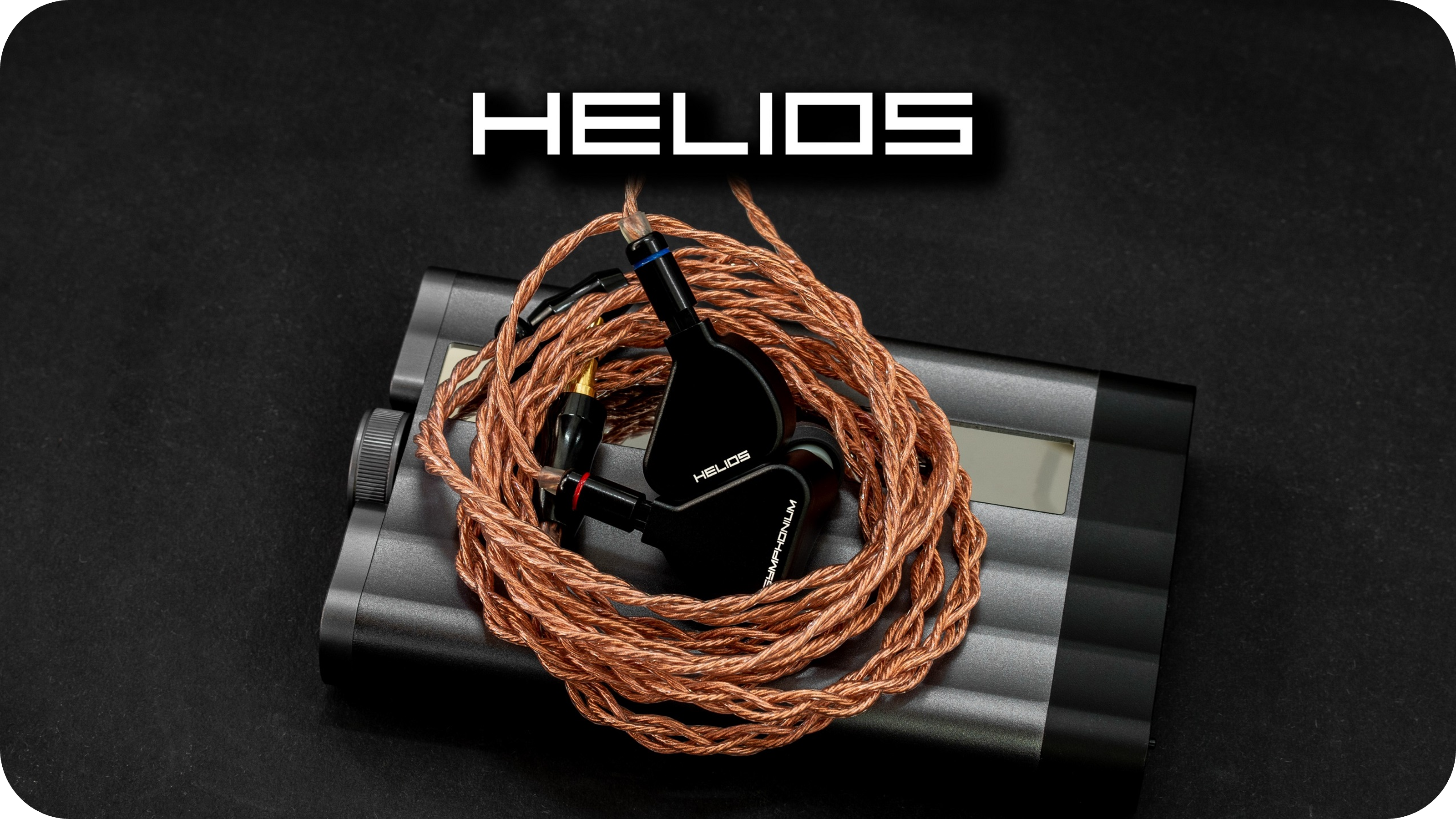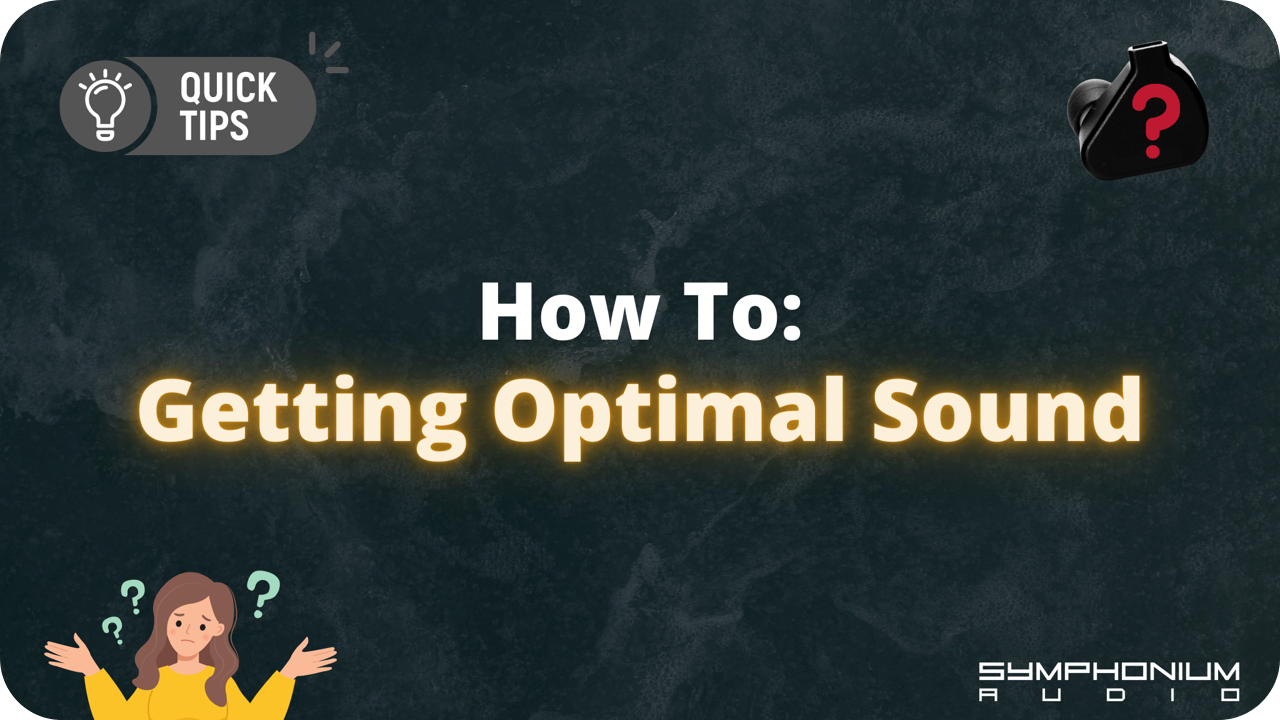
Welcome to ‘The Story:’, a series of blog posts where we discuss the design process behind our IEMs. We look at the Symphonium Triton; our take on a warm-sounding IEM. Priced at US$899 and equipped with 1 dynamic driver and 2 balanced armature drivers, the Triton represents our idea of an effortlessly musical and easy-to-listen-to IEM.
Why The Triton?
After launching the Helios, we received feedback from customers mentioning that they wanted a warm-sounding IEM to complement the Helios for days where they wanted something easy to listen to. We then evaluated the state of warm-sounding IEMs in the current market, and found that IEMs targeting a warmer sound typically lacked treble extension and also tended to sound mushy or smeared in the midrange, leading to loss in resolution and poor stereo imaging. This view was also shared by our customers.
It was immediately apparent to us that we could use the DNA found in the Helios to create an IEM that had the resolution and speed to complement a warmer tonality. The goal was to make something that sounded closer to what the listener would hear in a live concert or in a casual jazz bar setting. It would have to sound smooth and warm, yet somehow capture the vibrance and energy found in that very setting.
The Paradox: Warm and fatigue-free tuning with treble extension

The line that threads fatigue-free tuning and extended treble frequencies is extremely thin - too much treble from 10,000hz-20,000hz and it sounds thin and fatiguing, too little treble in the same region and it would sound rolled-off and low resolution.
Hence, the Triton was conceptualised to challenge that very paradox. We had to adjust the tonal balance to be suitable for long duration use for hours on end yet had the technical ability and treble to prevent it from sounding dead and lifeless.
In contrast to the Helios that was targeted towards a very neutral, studio-like sound, the Triton has to be built for pure sonic enjoyment. It has to be musical and effortless to listen to, as if making the music come alive right in front of your eyes. It has to put the listener as if they were listening to the music as part of the live audience.
Marrying Three Drivers
A key design parameter for the Triton was that we intended to use 3 drivers. We wanted to keep the number of drivers low yet produce stellar results with the use of a complex and effective true 3-way crossover. Each individual driver had to be armed with a crossover, which allowed us to fine-tune our earphones to exactly how we want it to sound with the help of high quality capacitors and resistors we use in all our earphones, akin to how good speakers are designed.
Such sophistication in our crossover optimises the frequency bandwidth each driver plays and eliminates unwanted resonant behaviours with the drivers when interacting with each other. This must always be done to enhance sound quality and to ensure maximum driver performance, just like with the Helios.
Designs with a large number of drivers must also be met with complex crossovers to fully optimise the use of all the drivers. Hence, to keep the Triton cost-effective in its price bracket we chose to use 3 drivers: 1 dynamic driver for bass, 1 balanced armature for the midrange and 1 balanced armature for the treble region.
True 3-Way Crossovers and FLAT

Like in the Helios, the ‘FLAT’ technology developed in-house with Subtonic will circumvent any issues that arise from source impedance mismatches; the Triton will sound unimpeded and consistent throughout all devices. You can use any source device from a phone to a tube amplifier and the sound characteristics of the Triton would be preserved.
The true 3-way crossover in conjunction with FLAT enables us to recreate the music as if the listener was part of the live audience.
Why A Dynamic Driver?
With the Triton, we wanted to lend the usual characteristics of dynamic drivers to form the warm sound that we were looking for. Dynamic drivers can typically handle a larger frequency bandwidth easier, resulting in greater punch and dynamics compared to the use of a single balanced armature woofer for the entire bass frequency.
We looked around at dozens of dynamic drivers that fit into our requirements of sounding full-bodied, tactile and responsive. Testing over 30 dynamic drivers of various sizes and materials, one common problem was that many dynamic drivers were too boomy without the physical impact and slam we wanted.
Eventually, we landed on a suitable 8mm dynamic driver that ticked our boxes. The 8mm dynamic driver we use is rather small, yet has the resolution and dynamics of larger 10-12mm dynamic drivers. We then chose to partner up with the driver manufacturer to design a custom coil for the dynamic driver to further improve both its longevity and sound.
3D Printed Acoustic Chamber:
WIthout a precise chamber created specifically for the dynamic driver, dynamic drivers will sound loose and uncontrolled, and also often have unpredictable response resulting in QC issues that manifest in poor channel matching.
Our 3D chamber, carefully designed and printed in-house helps the dynamic driver perform more consistently, eliminates QC issues and removes midbass bloat to eliminate auditory masking effects. Additionally, it also helps the dynamic driver to sound more responsive and tactile, producing solely bass frequencies to remove any unwanted phase cancellation artefacts when playing in conjunction with the balanced armature drivers.
Treble As Clear As Day
The common feedback on the Helios was that many of our customers found the treble to be absolutely stellar. Hence, we used the same tweeter to shape the treble frequencies of the Triton to create the fantastic stereo imaging that the Helios is renowned for.
As the Triton is going for a more relaxed sound signature, we tweaked the tweeter’s response to be a little more laid-back whilst having a similar extension at the top end that does not compromise on its stereo imaging performance. The fine balance in the treble tuning saw many revisions over 6 months to ensure that it is exactly where we wanted it to be.
Frequency Response

Note: We measure the Triton with 8500hz resonance as it is designed to be worn deep-fitted. We use the B&K 4195-Q (IEC 60318-4) for IEM measurements; it is not 100% comparable and compatible with other IEC60318-4 measurement rigs.
The Triton’s frequency response, compared to the Harman Target, is warmer with much less lower treble response. This allows for the Triton to sound warm and relaxed yet without the consequence of frequency roll-off on both extreme ends.
The 10,000hz-20,000hz response of the Triton is also elevated relative to the Harman Target, as the Harman Target does not prescribe a target (for the 10,000hz-20,000hz region) due to measurement inaccuracy of the IEC 60318-4 standard in the 10,000hz-20,000hz range. The treble extension of the Triton allows for pinpoint imaging amidst its warmer tonality.
Final Thoughts
We are proud of what we achieved with the Triton as we managed to thread that fine balance between a relaxed tuning and with extended treble. The Triton is able to replicate the feeling of live music and shines especially on vocal-centric tracks. Both male and female vocals are a treat to listen to with their sweet and dense midrange that carries weight behind its notes. You will be able to hear the raw emotion and fine nuances the Triton is able to reproduce.
We are very curious as to what fans of warm-sounding IEMs think of the Triton. Please leave us some comments if you have tried the Triton!
Where To Buy
Click here for the list of retailers we work with to make the Triton global. You can also purchase the Triton directly on our website here.





Leave a comment
All comments are moderated before being published.
This site is protected by hCaptcha and the hCaptcha Privacy Policy and Terms of Service apply.